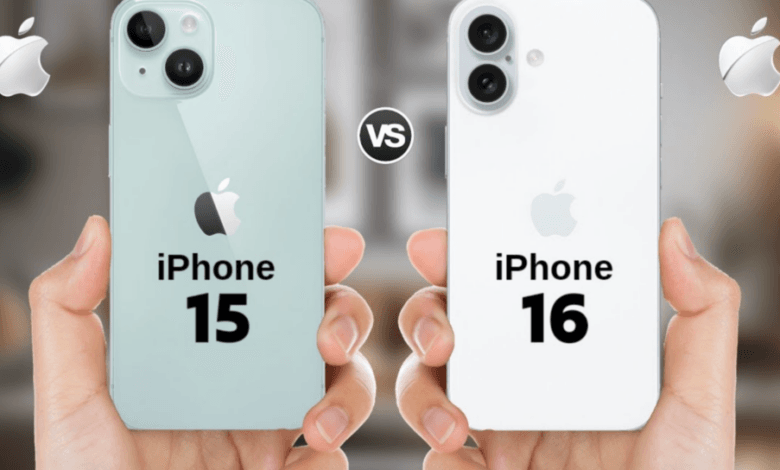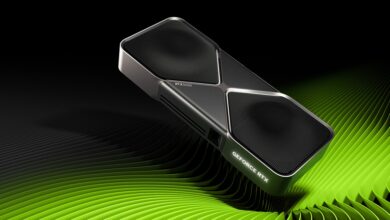
Apple continues to push the boundaries of smartphone technology, and with the release of the iPhone 16, fans are eager to know how it stacks up against last year’s iPhone 15. While both models share many of the core features Apple is known for, there are notable upgrades in the iPhone 16 that make it a compelling option for users looking to stay at the cutting edge of technology. From design refinements to performance improvements and new camera capabilities, let’s take a closer look at how these two flagship models compare.
1. Design and Build: Sleeker and More Durable
At first glance, the iPhone 16 looks similar to the iPhone 15, continuing Apple’s sleek, minimalistic design ethos. However, the iPhone 16 introduces a slightly more refined aesthetic with thinner bezels, allowing for a larger screen without increasing the overall size of the device. Apple has also upgraded the materials, offering titanium alloy edges compared to the aluminum frame of the iPhone 15, making the new model both lighter and more durable.
Both models maintain IP68 water and dust resistance, but the iPhone 16 includes an improved Ceramic Shield for better drop protection.
Key Differences:
- iPhone 16: Titanium alloy frame, thinner bezels, enhanced Ceramic Shield.
- iPhone 15: Aluminum frame, standard Ceramic Shield.
2. Display: Bigger, Better, and Brighter
The iPhone 15 was praised for its 6.1-inch Super Retina XDR display, which delivered sharp, vibrant colors. The iPhone 16 takes it a step further with a slightly larger 6.2-inch LTPO OLED display and a higher refresh rate of up to 120Hz, offering smoother animations and scrolling. Apple has also increased the peak brightness on the iPhone 16, making it more visible under direct sunlight.
The iPhone 16 is also equipped with Always-On Display (AOD) functionality, something missing in the base model of the iPhone 15.
Key Differences:
- iPhone 16: 6.2-inch LTPO OLED, 120Hz refresh rate, Always-On Display.
- iPhone 15: 6.1-inch OLED, 60Hz refresh rate, no AOD.
3. Performance: A16 Bionic Chip vs. A15 Bionic
When it comes to performance, the iPhone 16 sees a significant upgrade with the introduction of the A16 Bionic chip. This chip is faster, more power-efficient, and better optimized for AI and machine learning tasks compared to the A15 Bionic in the iPhone 15. The A16 Bionic chip, built on a 4nm process, delivers a noticeable improvement in multitasking, gaming, and overall speed.
Apple has also enhanced the thermal management in the iPhone 16, which allows for more sustained performance under heavy loads, making it the better choice for power users or those into mobile gaming.
Key Differences:
- iPhone 16: A16 Bionic chip, 4nm process, better thermal management.
- iPhone 15: A15 Bionic chip, 5nm process.
4. Camera: Even Sharper Photography
The camera is where Apple often excels, and both the iPhone 15 and iPhone 16 deliver high-quality photography experiences. However, the iPhone 16 introduces an upgraded 48MP main sensor, compared to the 12MP primary sensor in the iPhone 15. This jump in resolution allows for sharper, more detailed images, especially in low-light conditions, where the iPhone 16’s improved Night Mode excels.
The iPhone 16 also includes an enhanced ultra-wide camera and a new periscope zoom lens on the Pro models, allowing for up to 10x optical zoom, a significant jump from the 3x zoom available on the iPhone 15.
Key Differences:
- iPhone 16: 48MP main sensor, periscope zoom (Pro models), improved Night Mode.
- iPhone 15: 12MP main sensor, standard ultra-wide and zoom capabilities.
5. Battery Life: Slight Boost in Endurance
Battery life is always a critical factor for smartphone users, and Apple has made incremental improvements in the iPhone 16. Thanks to the more power-efficient A16 chip and LTPO display, the iPhone 16 offers up to 20 hours of video playback, compared to the 18 hours on the iPhone 15.
Both models support MagSafe wireless charging and fast charging, but the iPhone 16 includes 30W wired charging, up from 25W on the iPhone 15, leading to quicker charge times.
Key Differences:
- iPhone 16: Up to 20 hours video playback, 30W fast charging.
- iPhone 15: Up to 18 hours video playback, 25W fast charging.
6. Software and Connectivity: Future-Proofing with 5G and Beyond
Both the iPhone 16 and iPhone 15 run on iOS 17, Apple’s latest operating system, with all the new features and enhancements that come with it. However, the iPhone 16 is expected to support Wi-Fi 7 for faster wireless speeds and improved connectivity, while the iPhone 15 is limited to Wi-Fi 6.
Both models support 5G networks, dual-SIM functionality, and Face ID for secure unlocking.
Key Differences:
- iPhone 16: Wi-Fi 7 support, improved 5G performance.
- iPhone 15: Wi-Fi 6 support, 5G.
7. Pricing and Availability: Is the Upgrade Worth It?
Pricing is always a significant factor when deciding between iPhone models. While the iPhone 16 brings a host of new features, it also comes with a higher price tag. The iPhone 15 remains a solid choice for those who want a powerful device at a slightly lower cost, especially if they’re not seeking the advanced camera features or performance upgrades of the iPhone 16.
Key Considerations:
- iPhone 16: Higher price point, but with new features and improvements.
- iPhone 15: More affordable, but still powerful for most everyday tasks.
Conclusion: Which Should You Choose?
The iPhone 16 brings several noteworthy upgrades over the iPhone 15, particularly in terms of display quality, camera capabilities, and processing power. For tech enthusiasts and power users who want the latest and greatest, the iPhone 16 is undoubtedly the better choice. However, for those content with excellent performance at a lower cost, the iPhone 15 still offers tremendous value.




